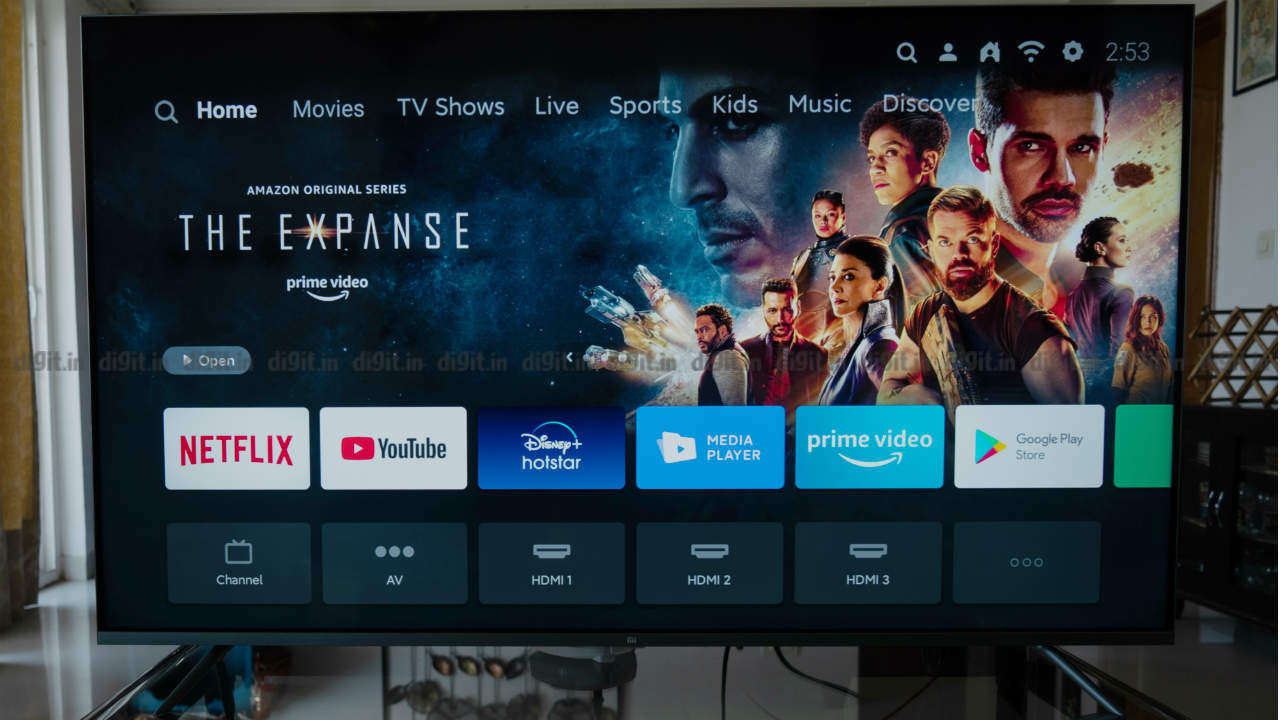The budget TV space took a dramatic turn in 2018 when Xiaomi launched the Mi TV 4 (review). The TV boasted 4K and HDR on a 55-inch panel in a super slim form factor for a price of Rs 50,000. It shook the TV market and since then we have seen an influx of budget TVs aiming to give users a flagship experience at a fraction of the price. While in some cases you get a lacklustre experience, in others, you get a more value for money proposition when purchasing a budget 55-inch 4K HDR TV. Today we have with us the Xiaomi Mi QLED T 4K priced at Rs 54,999. The closest competitor that we have reviewed is the TCL QLED TV C715 (review). While we reviewed the 65-inch variant of the TCL TV, it is available in 55-inches as well.
The Mi QLED TV brings with it some interesting features. To begin with, it supports HDR 10+, a feature we have seen on limited flagship TVs. It also supports eARC (Enhanced Audio Return Channel) and ALLM (Auto Low Latency Mode) both of which are features of HDMI 2.1. The TV does not support VRR (Variable Refresh Rate) and we’ll get to that when we talk about gaming. With a QLED display, some flagship features and some Xiaomi special sauce thrown into the mix, has Xiaomi redefined the 50K TV once again? Let’s find out.
Xiaomi Mi QLED 4K Smart TV specs at a glance
Panel Size: 55-inch
Panel Type: VA LED display with quantum dot layer (QLED)
Panel Resolution: 3840 x 2160 – 4K
Panel Refresh Rate: 60Hz
HDR 10 support: Yes
HDR 10+ support: Yes
Dolby Vision Support: Yes
Weight (with stand): 14.2 kgs
HDMI Ports: 3
USB Ports: 2
Bluetooth: Yes
Wi-Fi: Yes
Ethernet: Yes
Speakers: 30W
Built-in storage: 32GB
Price: MRP: 54,999
Xiaomi Mi QLED TV 4K Display and Picture Quality
Let’s start with the most important thing about the TV – the display. As the name suggests, the Xiaomi Mi QLED TV 4K brings with it a quantum dot layer between the backlighting and the display to give you richer colours – QLED display. It supports a 4K resolution with support for HDR 10, HDR 10+ and Dolby Vision. We don’t know the peak brightness of the TV. One of the unique things about the Xiaomi TV is that in addition to traditional picture modes and picture controls like brightness, contrast, hue, colour temperature, gamma, etc. it also lets you choose the colour space such as DCI-P3, BT 2020, BT709, etc. giving you more customization control over what you are watching. So, let dive in and see how the TV performs in our tests.
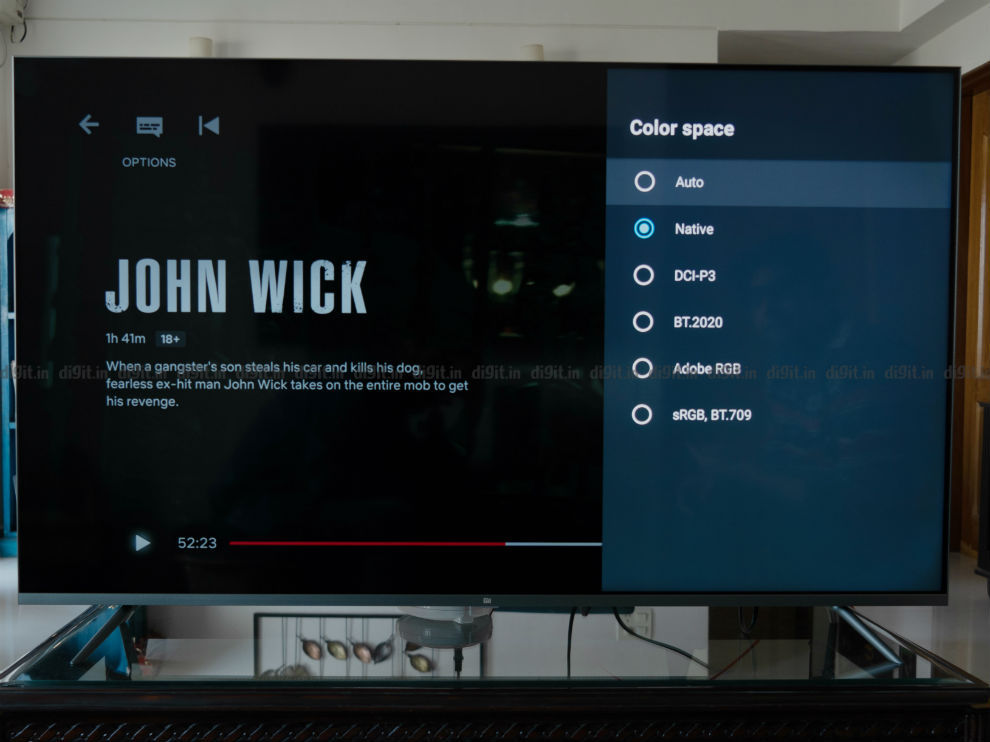
Xiaomi Mi QLED TV: 4K and HDR performance
Let’s break this up into HDR 10+ and Dolby Vision content to see how the TV performs. Starting with the new HDR 10+, Amazon Prime Video is a source of HDR 10+ content and in our experience, it is a mixed bag. We saw the Grand Tour Season 1, Episode 1 with all the fancy cars driving in the desert and there is a hint of green tint in the desert sand and in some parts of the sky. This green tint isn’t visible in the same content on other TVs like the Sony W950D and the LG B9, both of which were there for reference. The colours also looked slightly muted. While the muted colour isn’t a bad thing, there is no option to change to a Vivid preset for those that want punchier colours or want the colours to pop. The same green tint issue is noticed on shows like Jack Ryan (again HDR 10+) and Assassin’s Creed Valhalla (more on this in the gaming section). We hope Xiaomi can fix this via an update.
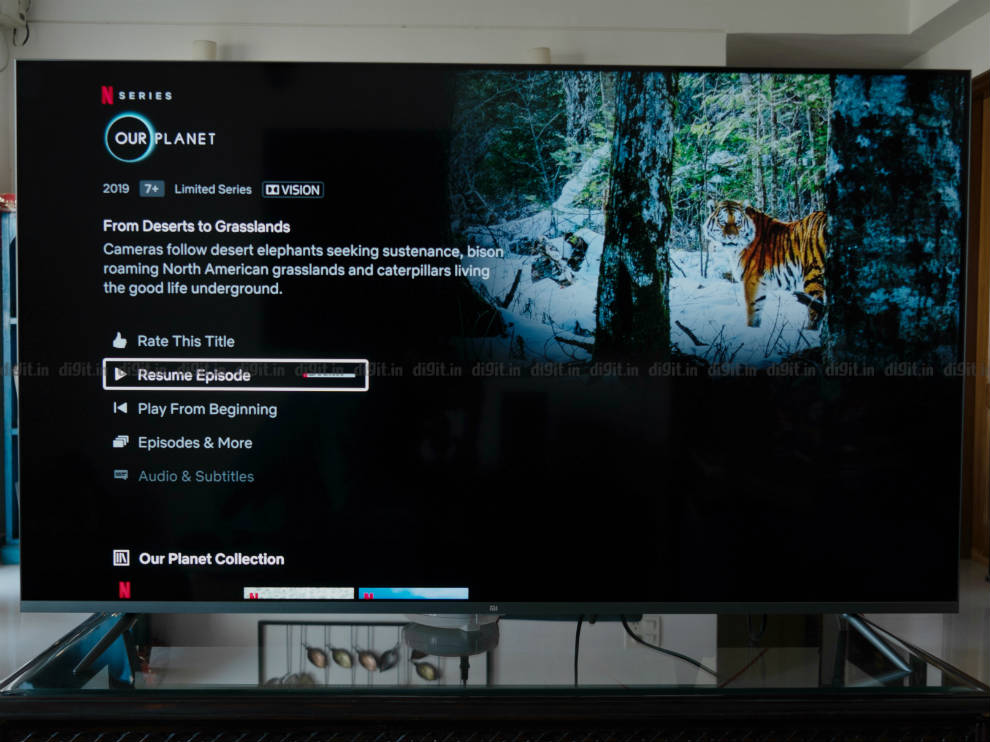
HDR 10 content found on platforms like YouTube looked good. From movie trailers to city landscapes and other demo HDR videos on YouTube were enjoyable, giving you a glimpse into the performance of the TV.
Moving over to Dolby Vision content, here we have a few test clips. We have Our Planet and Altered Carbon on Netflix, Wonder Woman and The Dark Knight in Dolby Vision via the Apple TV app on a Fire TV Stick 4K. Let’s start with what we enjoyed. The end fight sequence in Wonder Woman which is not only a special effects galore but also full of bright fire and lightning. This sequence looked very enjoyable and we switched between Dolby Vision bright and dark, based on the lighting in the room. Keeping Dynamic Backlighting on or off can be a personal choice. During the day time, we felt keeping dynamic backlighting on reduced the backlighting lower than we liked while keeping it on at night dimmed it enough to try and make the blacks look deep, rather than grey, which was nice. Remember, the panel doesn’t have dimming zones.
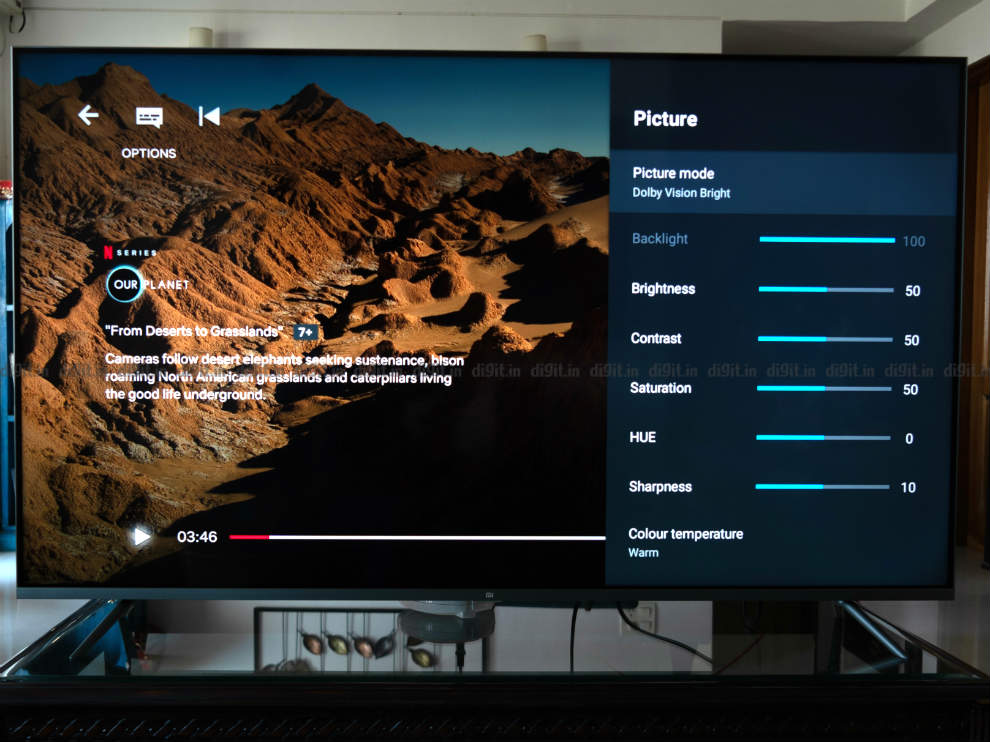
Same for The Dark Knight where we have Batman infiltrating a Hong Kong skyscraper sequence. This is a relatively dark sequence and the details were well noticeable. The same goes for the warehouse fight in Altered Carbon Season 1 and the day-night cycle in Our Planet. Dolby Vision content looks good. You may want to switch between the ‘dark’ and ‘standard’ setting for gamma, based on your preference and the lighting in your room. Overall, even though HDR 10+ content has some hiccups, Dolby Vision content is enjoyable on the Mi QLED TV 4K.
Xiaomi Mi QLED TV: FHD performance
Moving over to SDR content and FHD content, we watched Mission: Impossible Fallout and Spider-Man: Homecoming on the TV via Netflix and the motorcycle chase sequence in Fallout on the highway is most definitely enjoyable. From skin tones to the desert backdrop and the fast-paced movement, it all looks good on this TV. We switched off Motion flow (personal preference), and the content was quite immersive.
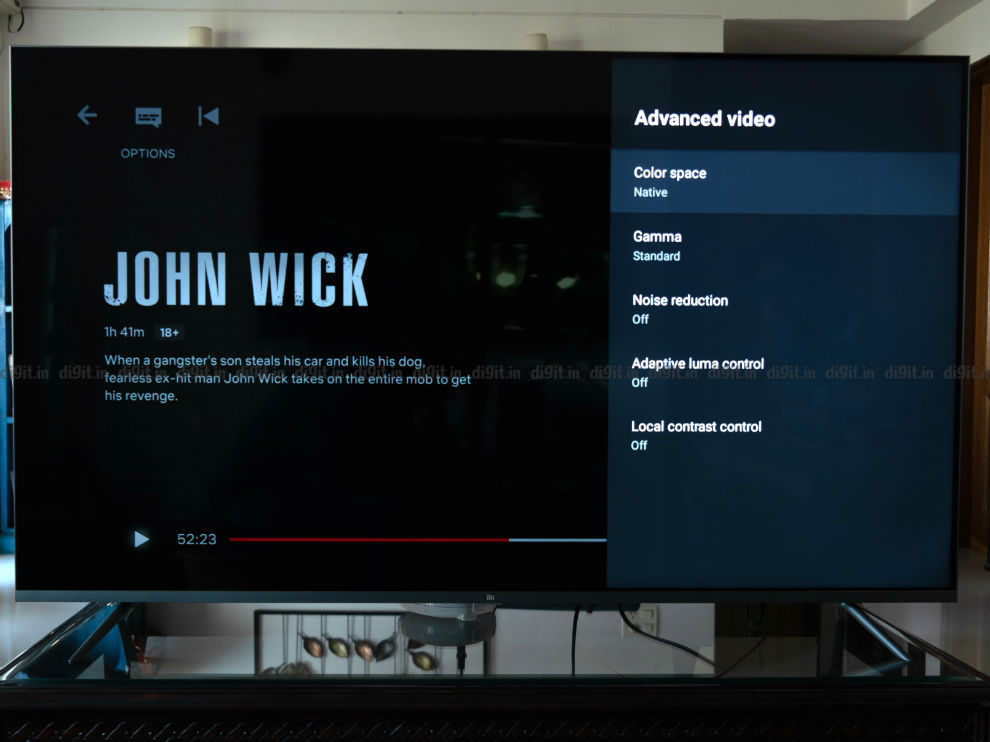
Even the reds and blues in Spider-Man’s suit looked punchy and the Washington Tower rescue sequence looked vivid with punchy colours.
A show like Young Sheldon, which has a vibrant colour pallet, is a treat on this TV. The colours pop, and the content is vibrant without switching to the Vivid preset. Switching to vivid does add some more “oomph” to the colours and I liked it this way. Safe to say, if you will watch SDR content off streaming services or a set-top-box, you should have a good time on this TV.
Xiaomi Mi QLED TV: Gaming performance
Moving over to gaming, we played 4 games on the TV – Spider-Man: Miles Morales (review), Dirt 5 on the PS5 and Gears 5 (review), Assassins Creed Valhalla on the Xbox Series X. In short, gaming is a treat on this TV but before we get into performance let’s talk about HDMI 2.1.
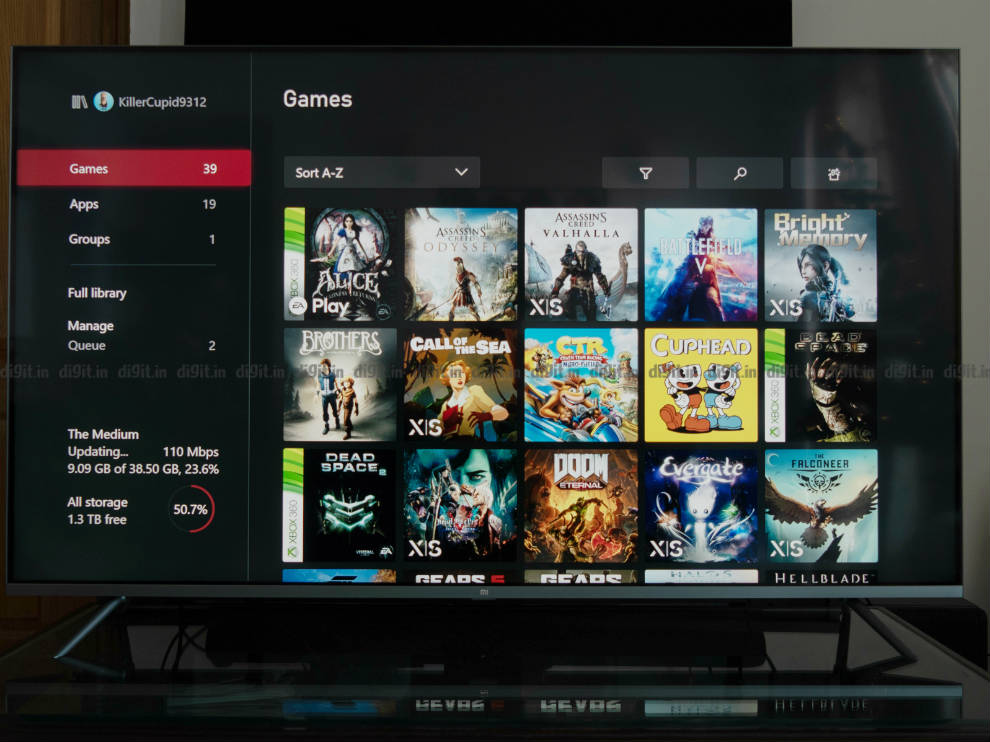
The Mi QLED TV 4K supports HDMI 2.1. Since the TV has a native refresh-rate of 60Hz, it doesn’t support VRR (Variable Refresh Rate). It does, however, support ALLM (Auto Low Latency Mode) and while we can’t measure the exact ms response time of the TV, Xiaomi says the TV has a 5ms response time when gaming in 4K at 60Hz, which is impressive.
Spider-Man: Miles Morales in the performance + RT mode looked impressive with the PS5 connected to this TV. When you plug in the gaming console to the TV for the first time, it doesn’t switch to HDMI 2.1 automatically. You need to navigate the settings and switch to HDMI 2.1. The TV gives you the option of HDMI 1.4, 2.0 and 2.1, giving you the flexibility to consume content the way you want from an external source.
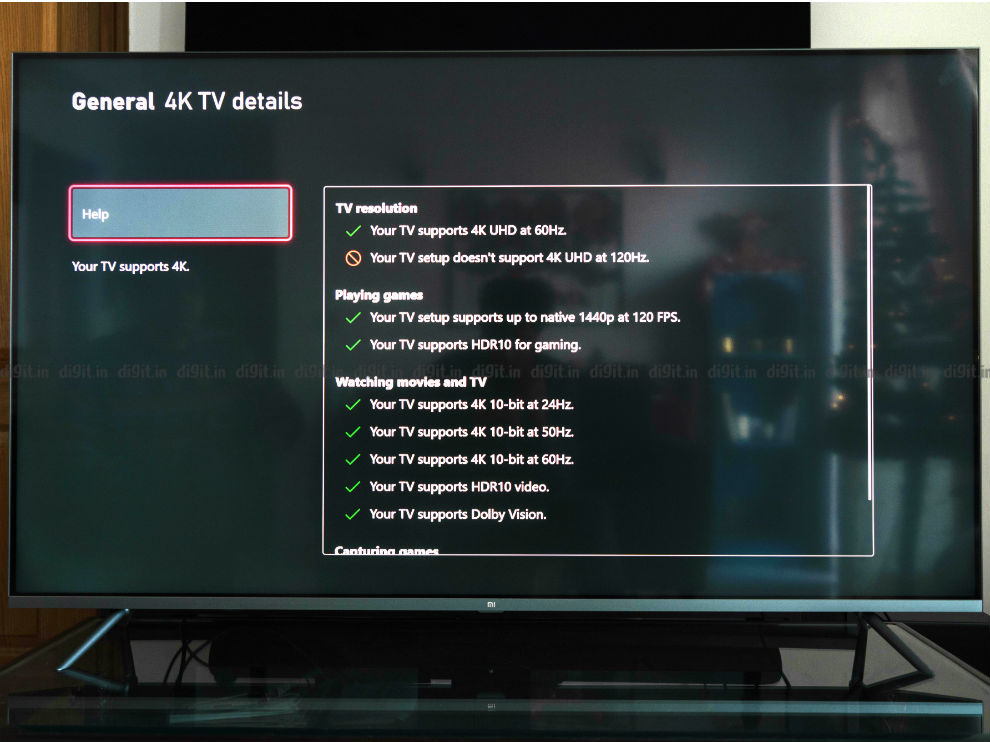
The gaming performance on this TV was detailed, rich and immersive. However, as we mentioned above, the green tint issue presented itself when playing Assassin’s Creed Valhalla. But in other games, be it Gears 5, or Dirt 5, we got punchy colours and swift response time that gave us an immersive gaming experience.
Xiaomi Mi QLED TV: Audio performance
The Xiaomi Mi QLED TV 4K has 30W of sound output divided into 6 drivers – 4 full-range drivers and 2 tweeters. While you won’t get room-shaking bass from this TV, what you will get is clarity. The vocals are clear on this TV. So, if you watch content like TV shows or documentaries, you should be fine with the TV speakers.
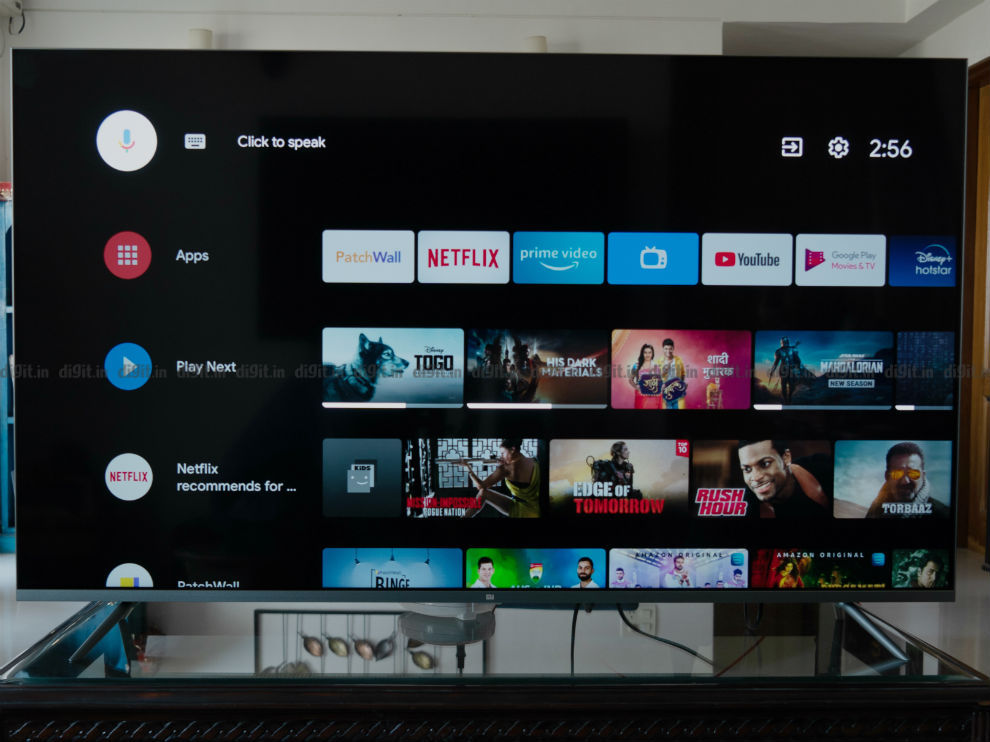
Even for mixed performance in an action movie with a background score, bangs and swishes and some dialogue, there was a clear distinction between the sounds. If you are looking at this TV as a bedroom TV and don’t want to invest in a soundbar, know that you can get by with the audio performance. At about 40-45% volume the speakers on this TV delivered room-filling sound.
Mi QLED TV 4K: UI
Xiaomi has given users the convenience of Android TV and its own PatchWall UI for a long time now and the tradition continues here as well. With a single click on the remote control, you can get access to the Android TV UI and PatchWall, based on your preference.
PatchWall has come a long way since it was first introduced. Xiaomi has more than 20 content partners populating the home screen with content. PatchWall aims to put content before the service. So, if you see content on the home page, be it The Boys, or the Mandalorian or even The Scam of 1992, you don’t need to worry about which service provider has this content. As long as you are logged into the streaming service, you can jump straight into the content without navigating the particular streaming app.
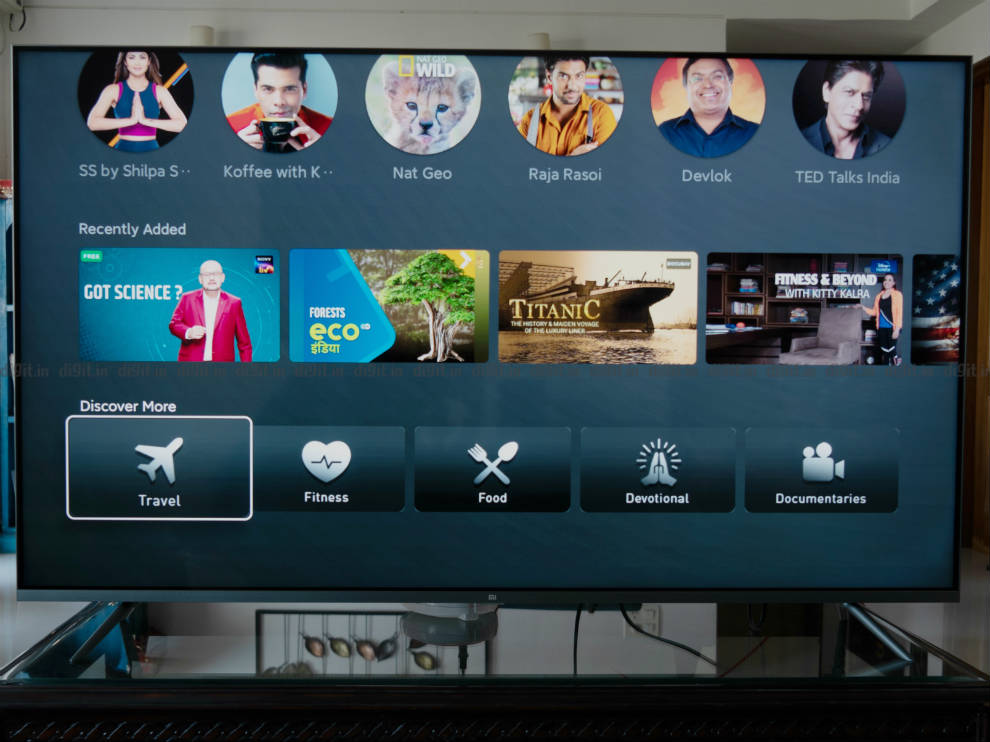
PatchWall also helps with discovering content with lists such as “India Top 10 Today”, “Top 20 in 2020”, “Recently added”, “Collections” and more. This UI is great if you are subscribed to a number of services and simply want to consume a lot of content without worrying about navigating the apps.
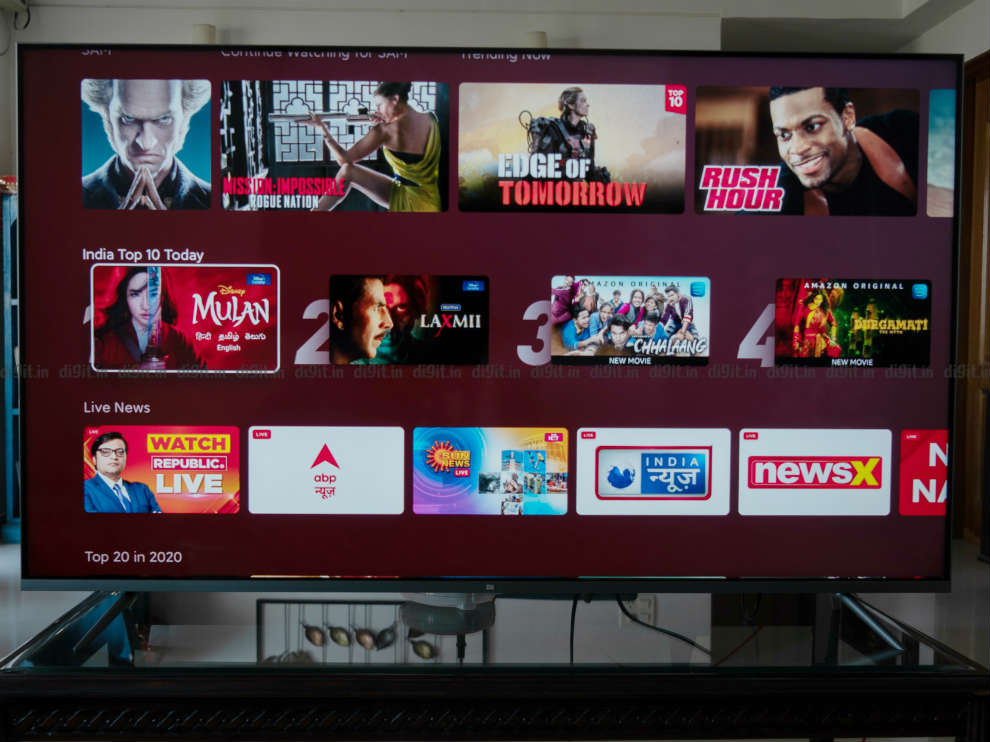
If there is any problem I have with the UI, it is just one and this me nitpicking here. When consuming content on Prime Video, when I pause the movie or TV show and go into the picture settings to change them and when I press ‘back’, rather than exiting the settings and going back to the show, the UI exits the show. This can get annoying. Since this doesn’t happen on other TVs, I’m sure it can be fixed via an update. As I said, it’s small and may be inconsequential to most.
Xiaomi Mi QLED TV: Remote control
The remote control you get with the Mi QLED TV 4K, is the same one we’ve seen on other MI TVs and even the Mi Box 4K (review). It’s quite a minimalistic remote with a power button, Google Assistant button, hotkeys for Netflix and Prime Video and dedicated buttons for Android and PatchWall UI. There is no dedicated mute button on the remote control but you can double-tap the volume down button to quickly mute the TV.
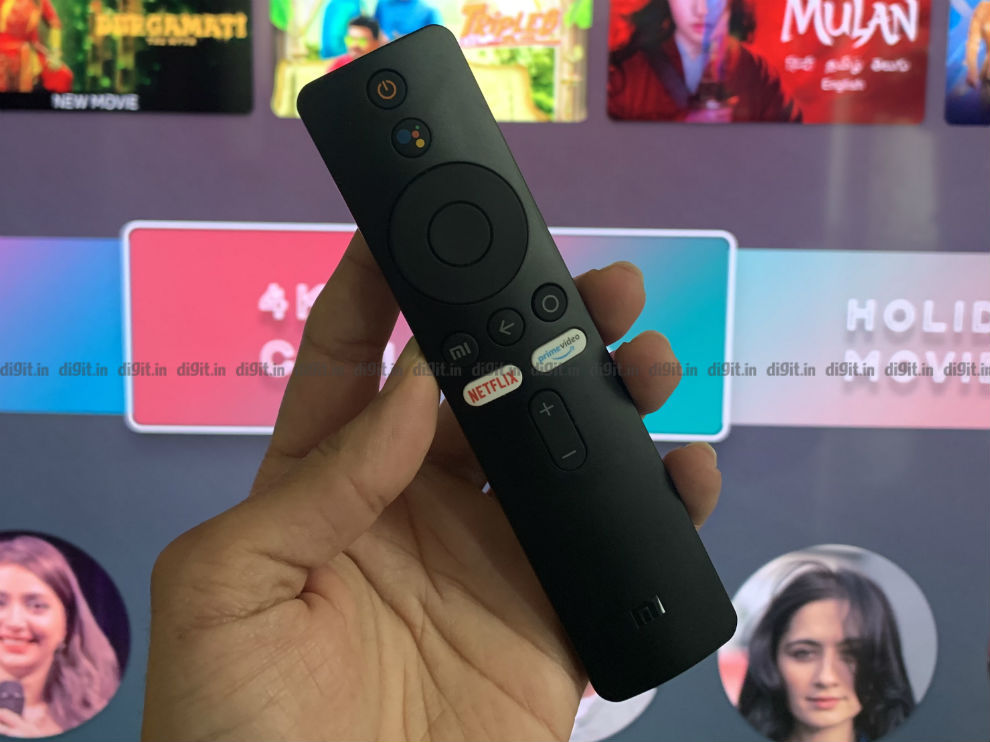
Call me old-fashioned, but I am the kind of person that taps the volume down button to reduce the volume of the TV rather than hold it and in this case, all I ended up doing is muting and unmuting the TV. Again, this is just me. Maybe you like the double-tap to mute option. Overall, the remote control is familiar, functional and gets the job done.
Xiaomi Mi QLED TV: Build and design
Moving over to the design of the Mi QLED TV 4K, the TV has an aluminium alloy frame with sandblast coating, giving it a premium finish. The bezels surrounding the TV are also very slim on three sides much like the Horizon Edition Mi TVs Xiaomi launched earlier this year. The TV has a 96% screen to body ratio and at the back, the TV has a carbon finish. The TV isn’t as slim as the Mi TV 4, but it is slimmer than what we saw on the Hisense A71F (review) we reviewed earlier this year.
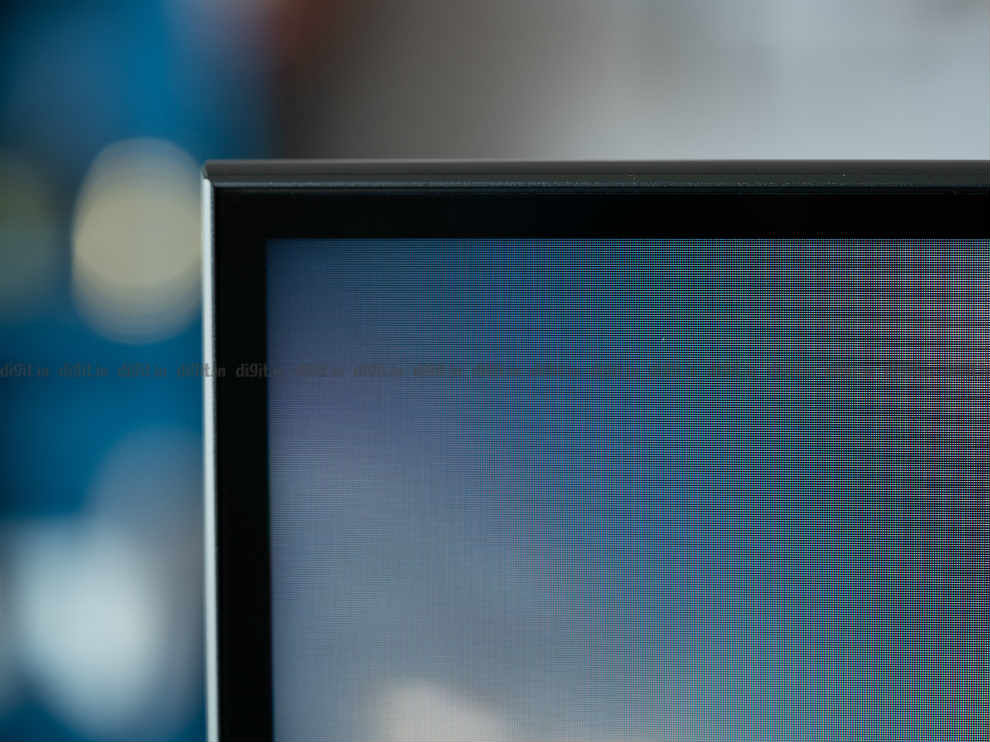
For connectivity, the TV has 3 HDMI ports, 2 USB ports and the 3.5mm port on the right while the AV, antenna, LAN and Optical port are downward facing. All 3 HDMI ports support ALLM with HDMI 2 supporting eARC and ALLM.
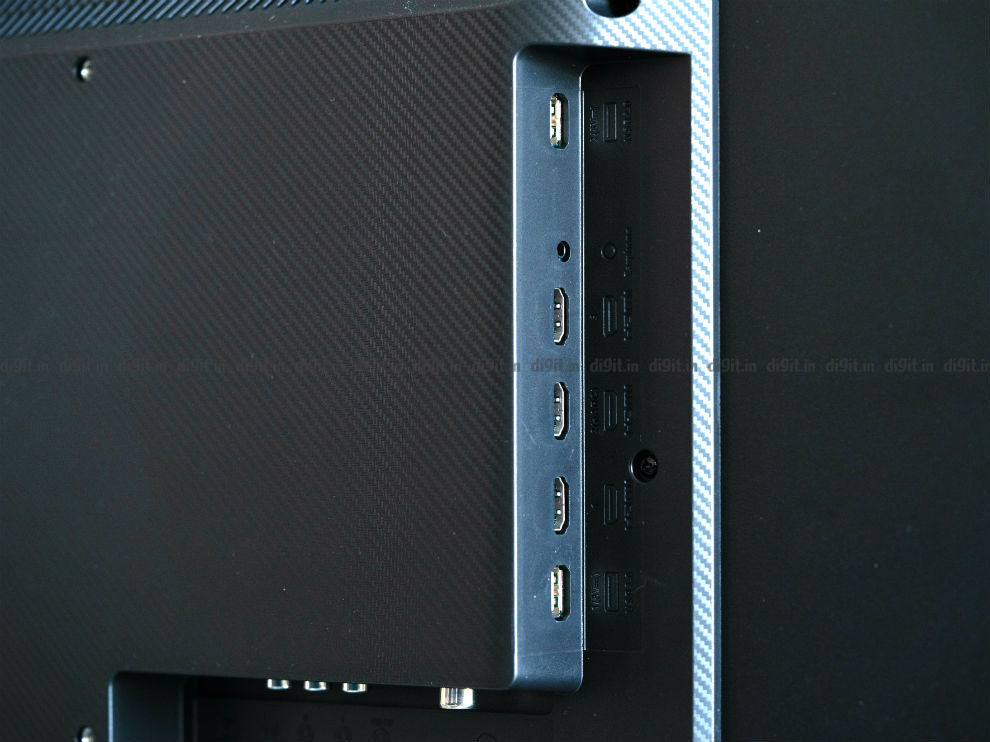
You can wall-mount the TV but if you decide to keep it on a table, it stands firm with 2 metal feet. There is enough place below the TV to place a soundbar or set-top-box without hampering the viewing experience. Overall, the TV has a good build and premium finish.
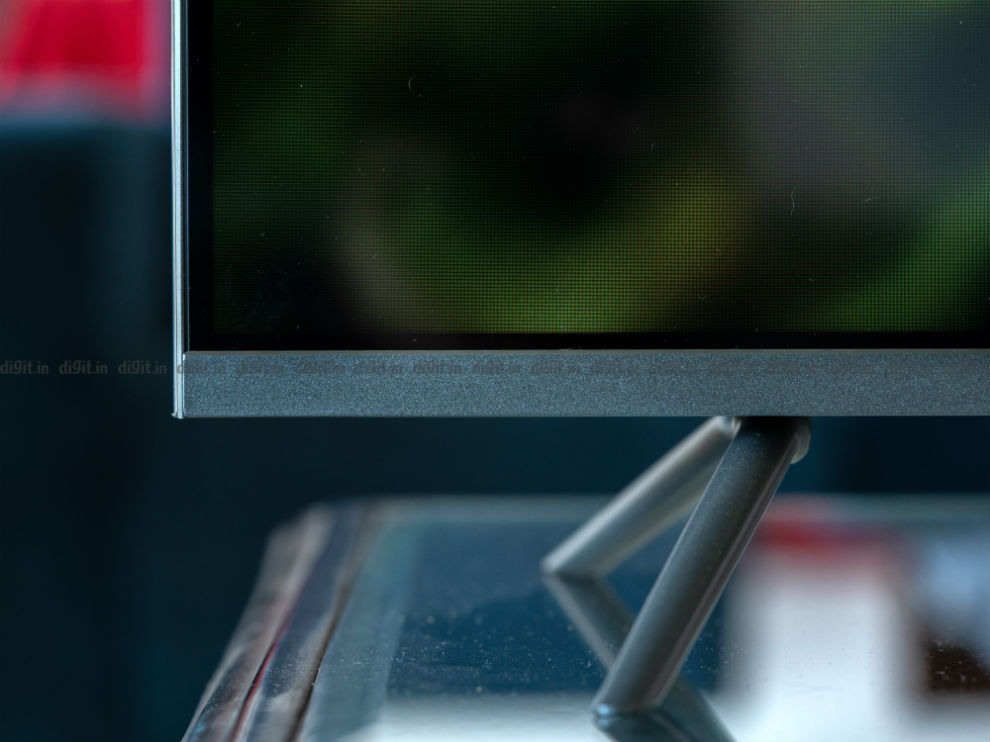
Bottom Line
The Xiaomi Mi QLED TV 4K brings with it a good panel for consuming content albeit with a few hiccups. Its SDR and Dolby Vision content performance is good with HDR 10 content seeing some issues. The TV brings with it HDMI 2.1 features like ALLM and eARC making it future proof and an attractive proposition for gamers on a budget. It has a good build, fluid UI and easy to use remote control. If you are looking for a 55-inch TV for a budget of 50-60K, you can definitely consider it.
Fuente: Digit
